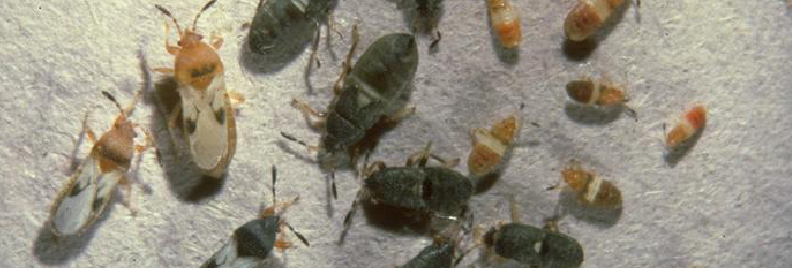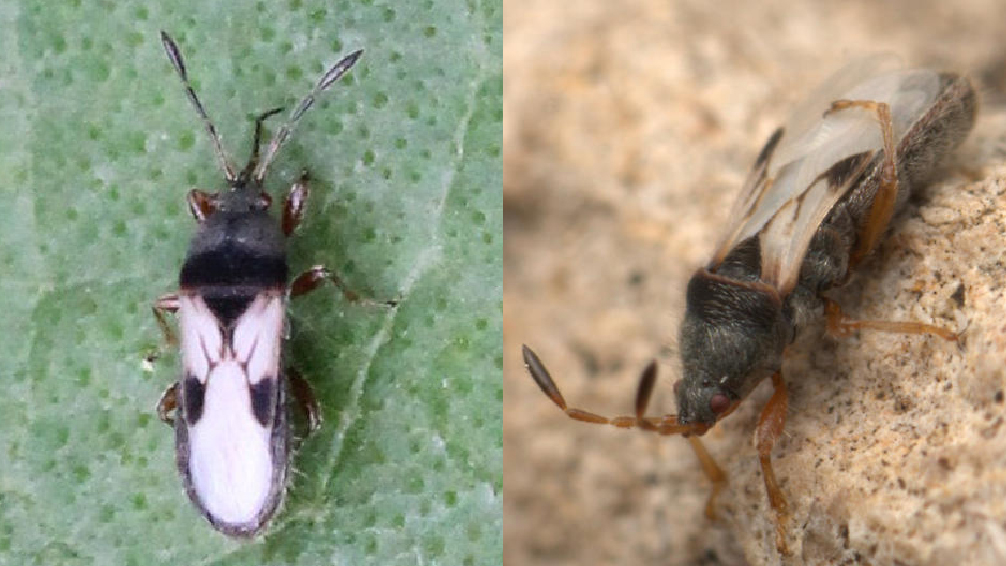
Kicking Chinch Bugs to the Curb
How Do I Know if My Lawn Has Chinch Bugs?
The life of a chinch bug sounds kind of glamorous, really— they spend their summers lounging around on the lawn, sipping drinks, and they have pretty great hairdos. The hot, dry summers of Houston are an absolute paradise for these lawn-sucking insects. They love to feast on our grass, guzzling the sap from each blade at speeds faster than we can crush an XL iced mocha on a hot day. It can be easy to mistake chinch bug damage for other common types of lawn damage, so taking the time to properly test the area and treat it accordingly will save you loads of time and money.

What Are Chinch Bugs?
These insects go through quite a style makeover as they mature. When they’re young, they’re vibrant orange with white stripes on their back— very Jack White circa 2004! Once they get older, they develop wings (but rarely ever fly) and transition to brown, and then finally black at full maturity, with a distinctive white circle on their back between the wings.
Since chinch bugs appear in hot weather and suck all the moisture from the grass, it can often be mistaken for drought damage or lawn burn from the family dog doing his business, because the dry yellow patches left behind look quite similar. However, if not properly treated in time, a bad chinch bug infestation could end up ruining your entire lawn. They aren’t always easy to spot because, while they love the heat, they try to stay out of the sun, so they’re often hidden deep in the grass. Luckily, some telltale signs will indicate whether you’ve got a bug problem on your hands.
Chinch Bug Prevention
Obviously, taking the appropriate steps to prevent an infestation will end up saving you a lot of grief in the long run, because while it’s possible to get them out, chinch bug grass damage can take a while to repair. To keep these invaders from shacking up in the backyard, take these preventative measures:
- Dethatch your lawn. When the grass is in super active growth stage over the Summer and we are mulching our grass clippings, the thatch layer can build up creating a perfect shady environment for chinch bugs to avoid the sunlight, and if the soil is compacted, that makes it extra homey for them. Apply a liquid soil activator to break down the thatch. If your soil is super compacted, try using a lawn aerator to freshen things up and apply a thin layer or Leaf Mold Compost.
- Don’t over-fertilize. This can attract more insects, so your best bet is to use small amounts of slow-release nitrogen fertilizers or water-insoluble fertilizers. Always make sure you follow the directions on the package carefully so you don’t end up applying too much.
- Water your lawn correctly. A dehydrated, stressed out lawn is extra vulnerable to pest infestations, and our Houston sun can dry up the lawn pretty fast. Instead of frequent, light watering, it’s better to water generously and less often, so more water seeps deep into the soil and reaches the roots. If there’s just a bit of water hovering around the soil surface, it will quickly evaporate.
- Keep your lawn 3-3.5 inches tall. Not too short, not too long—just right! If your grass is too short it can get stressed out, and if it’s too tall, it creates that shady environment that chinch bugs love.
How Do I Know if My Lawn Has Chinch Bugs?
If you think you may have a bug problem in your lawn, try some of these tried and true methods of identifying lawn infestations:
- Check all the nooks and crannies. Since they aren’t big on direct sunlight, you’ll usually have to spread the grass and peek around to see if any nymphs or fully-grown chinch bugs are hiding in there.
- Do the coffee can test. Take a big coffee can and cut out the bottom, so you’re left with a metal cylinder. Press it into the soil 2 inches deep, and fill a separate, larger bucket with soapy water. Pour the soapy water into the metal cylinder, and as it soaks into the soil, keep pouring until it stays full. In about 5-10 minutes, if you have a chinch bug infestation, you’ll see them start to float to the top of the can. If there’s only one or two, it’s not the end of the world (unless your lawn is super dehydrated and not well kept). If you’ve got five or more in the can, then your lawn is in trouble and it’s time to intervene.

Getting Rid of Chinch Bugs
Okay, so you’ve got a bug problem on your hands. What now? Well, for starters, performing some of the preventative measures listed above, such as dethatching and watering, should help a lot to make conditions less favorable for them. But if the problem is getting out of hand and it’s time to bring out the big guns, there are a few things you can do:
- Buy some beneficial predatory insects from a commercial insectary. Tiny wasps and big-eyed bugs like to feast on chinch bugs. You can purchase bug boxes that have been refrigerated so the little guys inside are eased into a state of hibernation. Once they go back up to room temperature, they’ll be ready to gobble up those garden pests. If you’re hesitant to use chemical insecticides, this is a fantastic option that won’t disrupt the balance of nature.
- Apply an insecticide. It’s no secret that pesticides have been making headlines lately since their impact on the ecosystem hasn’t been great, but if used sparingly and carefully, you can minimize potential damage to surrounding plants and wildlife, while effectively kicking some serious bug butt. The best pesticide for chinch bugs contains Bifenthrin or Lambda-cyhalothrin.
These dastardly lawn destroyers are strangely vampiric, shielding themselves from the sun and sucking the sap from innocent blades of grass. They certainly aren’t as glamorous as the vampires from Twilight, so it’s definitely in your best interests to keep them away. If you need help selecting the best chinch bug remedy for your lawn, come visit us at our garden center in Houston, and we’ll help you get set up with everything you need to send those chinch bugs packing.
